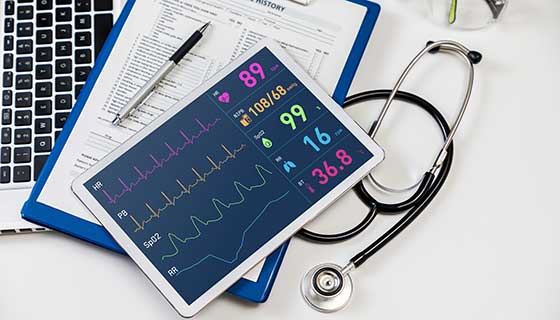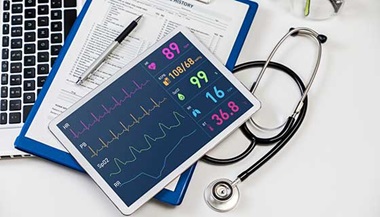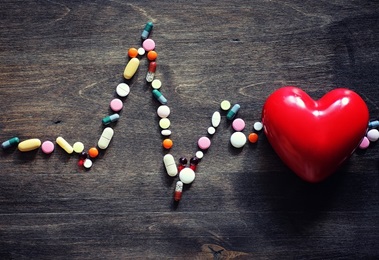Resistant Hypertension
Resistant hypertension is high blood pressure that does not respond well to aggressive medical treatment. Hypertension is considered resistant when all of the following are true:
- Someone is taking three* different blood pressure medications at their maximally tolerated doses.
- One of the blood pressure medications is a diuretic (removes fluid and salt from the body).
- Blood pressure remains above your goal—(usually 130/80 mmHg, although individual goals should be discussed with your doctor)
- If hypertension requires four or more medications to be controlled it is also called resistant hypertension.
Resistant hypertension substantially increases the risk of heart attack, stroke and kidney failure.
What You Need to Know
- Twenty percent of patients with hypertension are resistant.
- Resistant hypertension may have no symptoms at all for months or years, but then can cause heart attack, stroke, and vision and kidney damage.
- Some people have pseudoresistant (seemingly resistant) hypertension, which is caused by other factors, such as conflicting medications or white coat hypertension (high blood pressure only in the doctor’s office).
- Pseudoresistant hypertension is important to diagnose and treat.
- Assessment and treatment of resistant hypertension includes addressing any identifiable conditions or causes and adjusting medications in a personalized way.
What is hypertension (high blood pressure)?
Blood pressure is the force of blood pushing against the artery walls. The force is generated by each heartbeat as blood is pumped from the heart into the blood vessels. The size, tone and elasticity of the arteries walls also affect blood pressure. The kidneys regulate blood pressure as well by regulating the amount of fluid and salt in the body.
Hypertension is defined when the average arterial blood pressure during a normal day is 130/80 mmHg or higher. Hypertension progressively damages the walls of large arteries (aorta, carotids) as well as smaller ones (cerebral, coronary, renal, retinal) and makes the heart work harder to get blood pumped through the body.
What are the symptoms of resistant hypertension?
You can have hypertension without having any symptoms. The best way to know if you have high blood pressure is to have your blood pressure checked by a health care provider.
However, symptoms may be felt when blood pressure first rises or during a hypertensive crisis, when levels are extremely high. These symptoms may include headaches, shortness of breath, chest pain and nosebleeds.
Dizziness is usually not a symptom of high blood pressure. In fact, dizziness can sometimes be a symptom of low blood pressure. Frequent or unexplained dizziness may be a warning sign of a serious condition and should be addressed by your physician.
What are the risks of resistant hypertension?
Over time, uncontrolled hypertension damages the arteries, contributing to their stiffening. As the arteries become narrower and less flexible, the heart has to work harder to move blood through the body. Uncontrolled high blood pressure can lead to stroke, heart attack, heart failure and other heart conditions; cause damage to your kidneys, memory and vision; and contribute to erectile dysfunction.
What causes resistant hypertension?
Underlying Medical Causes
In about 25 percent (1 out of 4) of people with resistant hypertension, there’s an identifiable, or secondary, cause. People whose blood pressure is raised by a medical condition are said to have secondary hypertension. Secondary hypertension will be very hard to control until those conditions are addressed. The more resistant the hypertension, the more likely there is to be a secondary cause.
Some common secondary causes of hypertension include:
Structural Disorders
- Sleep apnea, a tendency to stop breathing for seconds during sleep
- Renal (kidney) artery stenosis, a narrowing of the artery that sends blood to the kidneys
- Coarctation of the aorta, a narrowing of part of the aorta (the artery that sends blood from the heart to the rest of the body)
- Kidney failure
Hormonal Disorders
- Primary aldosteronism, an adrenal gland disorder that raises blood pressure.
- Pheochromocytoma, a tumor in the adrenal gland that produces too much epinephrine and/or other hormones that raise blood pressure
- Hyperthyroidism (overactive thyroid) and hypothyroidism (underactive thyroid) can both raise blood pressure
- Cushing’s disease, often due to a tumor in the pituitary gland that causes overproduction of cortisol, the “stress hormone”
- Other, more rare congenital neuroendocrine diseases
Unknown Triggers
In the other 75 percent of people with resistant hypertension, there is no known medical cause. These people are said to have primary or essential hypertension, and their treatment will focus on medication and lifestyle management.
How is resistant hypertension diagnosed?
- Full history and physical exam, which includes letting your doctor know about all medications and supplements, whether they are prescription, over-the-counter, herbal or recreational. It’s important to mention if you skip doses of daily medicines.
- True measurement of your blood pressure using correct technique and calibrated equipment.
- Home blood pressure measurement during the day and 24-hour ambulatory blood pressure monitoring to record your blood pressure throughout a regular day. It may be used if your physician suspects your blood pressure readings in the office don’t tell the whole story.
- Tests for secondary conditions, which may include special blood work and imaging studies. Identifying and treating these conditions may eliminate hypertension or at least make it more treatable.
- Tests for organ damage caused by hypertension, which may include:
- Electrocardiogram to measure your heart’s size and rhythm
- Echocardiogram to measure your heart’s size and function
- Fundoscopic eye exam to check for damaged blood vessels inside the eye; these tiny blood vessels come in from the brain and are a unique opportunity for your doctor to judge the health of similar blood vessels in your brain, heart and kidneys
- Urinalysis to check for kidney damage
- Other blood tests (genetic testing for rare disorders)
- Chest X-ray
How is resistant hypertension treated?
Treatment options for resistant hypertension or pseudo-resistant hypertension (described below) depend on your underlying conditions and how well you tolerate various medications. Treatments include:
- Addressing any conditions that may have caused the hypertension.
- Making lifestyle changes
- Adjusting medications to find your optimal type and dosage
What is pseudo-resistant hypertension?
Pseudo-resistant (seemingly resistant) hypertension is high blood pressure that seems to be resistant to treatment, but other factors are actually interfering with proper treatment or measurement. Specifically:
- Wrong medication or wrong dose
- Medicines and supplements
- Lifestyle factors
- White-coat effect
- Stiffening of the arteries
- Inadequate measurement technique
Pseudo-resistant hypertension is also very important to diagnose as true resistant hypertension, because both conditions raise your risk of heart attack and stroke.
Wrong Medication or Wrong Dose
For each person there’s an ideal combination of medications and dosages that would best control their hypertension. Some people haven’t yet received that ideal combination. It’s important to work with a doctor who is familiar with the range of medications and who knows what works best for each individual.
Medicines and Supplements
Many medications and supplements raise blood pressure. Examples include various pain medications, antidepressants, decongestants, aspirin at high doses and birth control pills. Stimulants — from caffeine and ADHD medications to cigarettes — as well as recreational drugs and excessive alcohol can also raise blood pressure. So can many “natural” or “herbal” supplements, as well as licorice-containing candies or drinks.
It’s important to give your doctor the full picture of the medicines and supplements you take, whether you take them every day or just once in a while.
Lifestyle Factors
Your lifestyle can make high blood pressure hard to control or may have caused it in the first place. Taking blood pressure medications without changing your habits means your medicine is lowering your blood pressure while your actions raise it back up. Such actions may include:
- Skipping your medication: When you take an aspirin and your headache goes away, you know the aspirin is working. But hypertension doesn’t cause any symptoms, so you may be less motivated to take your blood pressure medications every day, allowing your body to suffer the damage caused by high blood pressure over time.
- Eating too much sodium (salt): Sodium raises blood pressure. Most Americans get too much salt from processed foods. Learn simple steps to reduce the salt in your diet.
- Smoking cigarettes : Smoking narrows and hardens your arteries, raising blood pressure. Consult your physician about how to quit smoking.
- Sitting around: Exercise strengthens your heart, allowing it to pump more blood with less effort. The good news: 40 minutes of aerobic exercise four times a week may lower your blood pressure as much as some medications do.
- Drinking too much alcohol. Alcoholic beverages raises blood pressure if they are consumed frequently.
White-Coat Effect
Many people have higher blood pressure in the doctor’s office than they have during their regular day. If your doctor suspects white-coat effect, you may need to wear a small, portable, 24-hour blood pressure monitor to see what your pressure looks like over time during your daily activities, or measure or BP with an automated device at home.
Stiffening of the Arteries
Some physicians consider the most authentic form of pseudo-resistant hypertension to be caused by stiffened brachial (arm) arteries that prevent the blood pressure cuff from obtaining a true reading. If your doctor suspects this form of pseudo-resistant hypertension, they might consider other ways to measure your blood pressure.
Inadequate Measurement Technique
Though it sounds simple, blood pressure can be measured incorrectly, and home blood pressure devices may not be properly calibrated. Your health care provider must take several factors into consideration, such as the size of your arm and your body’s position during measurement.





